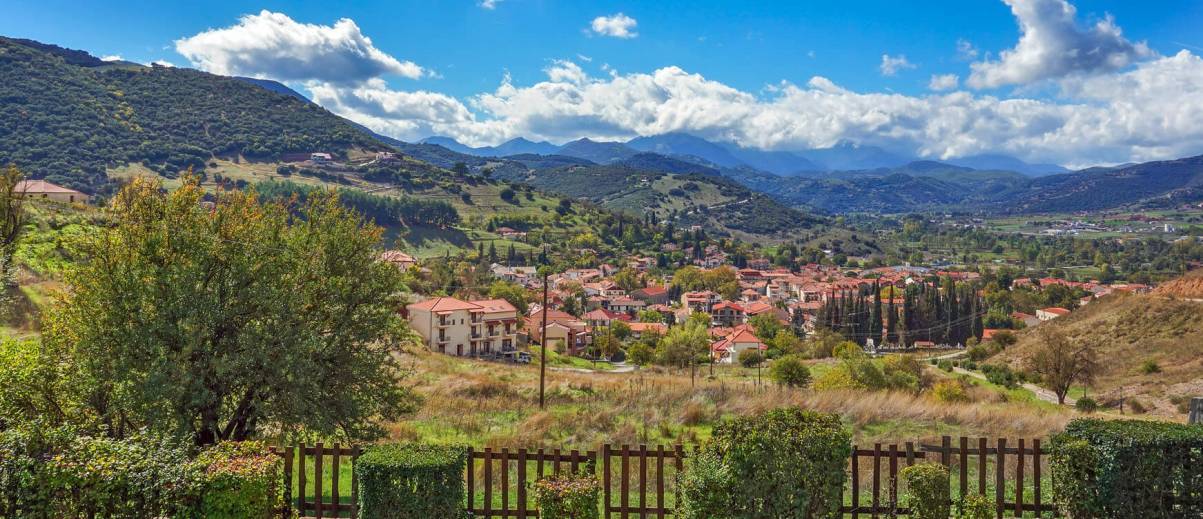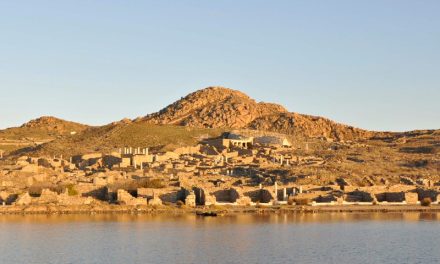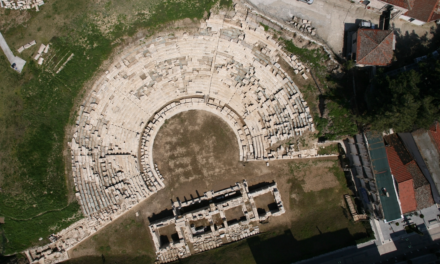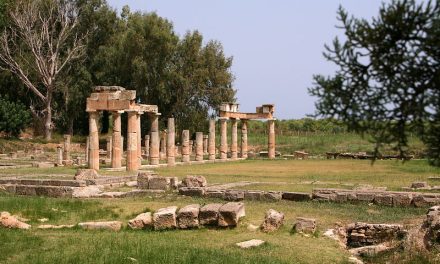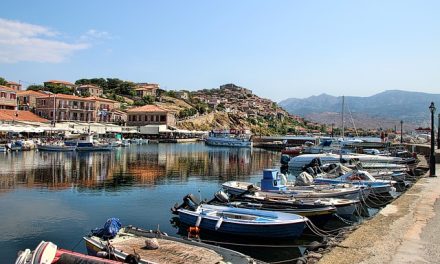The historic mountain town of Kalavrita, sheltered in the foothills of Mount Chelmos in the northern Peloponnese region of Greece, is known for its rich history, natural beauty, and cultural heritage. The gorgeous natural landscape around Kalavrita offers many options for the traveler: the Kalavrita Ski Center at Mount Chelmos, a charming cog railway line, the superb Caves of the Lakes and tons of outdoor activities, such as rafting and kayaking in nearby rivers, walking and hiking though lush forests, motor and buggy driving along mountain roads and even paragliding or hang gliding.
Kalavrita is also a place steeped in history; during World War II, one of the darkest pages of the Nazi occupation of Greece took place, the Massacre (or Holocaust) of Kalavrita. On 13 December 1943, the German army led the entire male population of Kalavrita, as well as teenagers over the age of 13 up the hill and executed them with continuous machine gun fire. Today you can find a memorial at the place of execution, located on a hillside overlooking the town, which honors the memory of the victims and serves as a reminder of the atrocities committed during the war. Visitors can also take a tour of the Municipal Museum of the Kalavrita Holocaust, which tells the story of the Kalavrita massacre and other events from World War II.
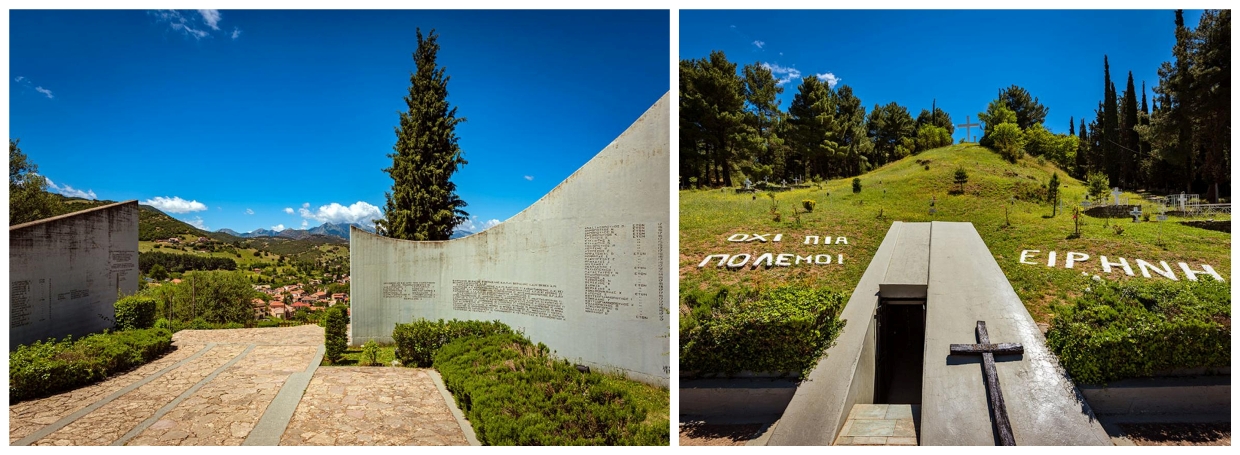
Kalavrita is known for its stunning historical monasteries. The most important of these is the Monastery of Mega Spileo, located in a large cave in a sheer cliff, where the western slopes of Mount Chelmos drop down to the gorge of the Vouraikos river. According to tradition, the monastery is one of the oldest in Greece, reputedly founded in 362 by the Thessalonian brothers Symeon and Theodore, who discovered in the cave the icon of the Theotokos painted by Luke the Evangelist. The monastery is one most important sites of Orthodox pilgrimages in Greece and is known for its frescoes, remarkable marble flooring, carved wooden iconostasis, frescos from the 17th and 19th centuries and many valuable sacred objects – among which the aforementioned icon. Another notable monastery is the Holy Monastery of Agia Lavra, which played a key role in the Greek War of Independence in the early 19th century. This ancient monastery was built in the 10th century and it was where, according to tradition, in March 25 of 1821 Bishop Germanos III of Old Patras proclaimed the national uprising against the Ottoman Empire and blessed the flag of the revolution.
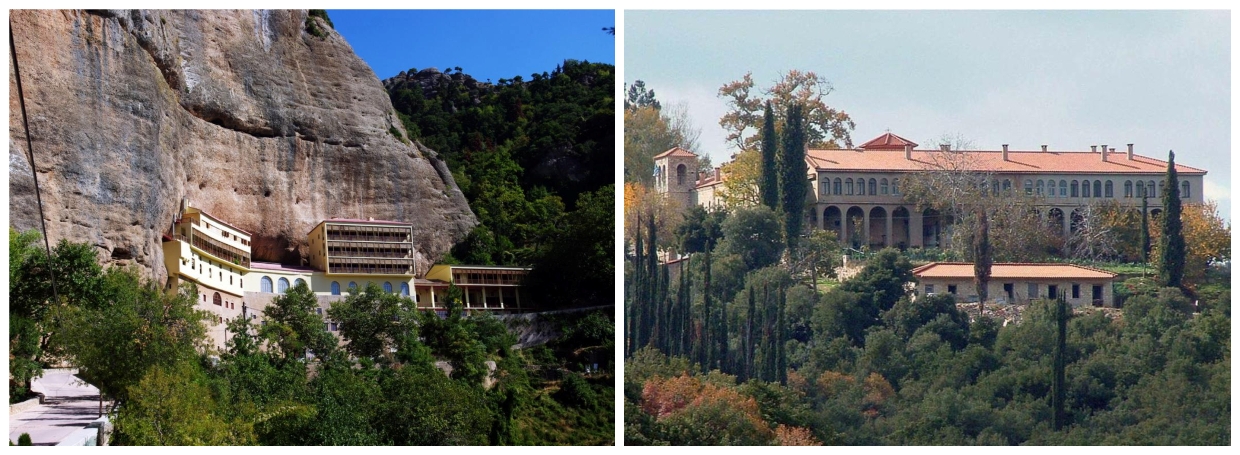
The Kalavrita Cog Railway, also known as the “Odontotos,” is a narrow-gauge railway that runs from the town of Diakopto to Kalavryta and has been running since 1896. The 60 minutes train journey is a popular tourist attraction known for its spectacular views of the surrounding Chelmos Mountains and the Vouraikos Gorge. The Cog Railway traverses villages, a valley, a gorge, slopes, runs alongside footbridges, waterfalls, and encounters caves and tunnels carved into the rock. The train is equipped with open-air carriages, allowing passengers to take in the beautiful scenery along the way.

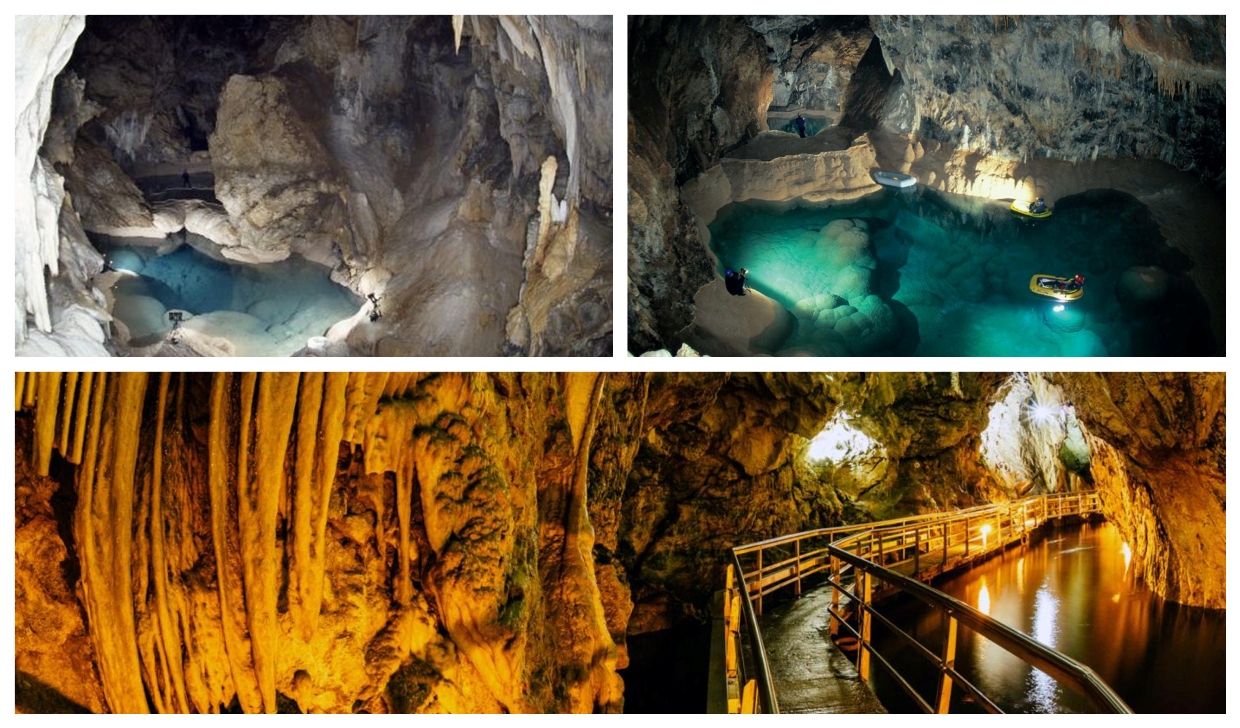
The Kalavrita Ski Centre is located on the northwest side of Mount Chelmos and it is one of the most popular winter destinations in the country, with the number of visitors during the winter season exceeding the 150.000. In the ski resort’s facilities there are a total of eight lifts and fourteen slopes including all levels of difficulty, with a total length of 25km, extending from 1700m (Xerocampos) to 2.340m (Neraidorachio) in altitude. The ski center has also a snow park for snowboarders and freestylers, will offering ski and snowboard rental, as well as ski and snowboard lessons for those new to the sport. In addition to skiing, visitors can also enjoy other winter activities such as snowshoeing and cross-country skiing. Finally, at the top of Neraidorachi slope, visitors can marvel at the telescope of the National Observatory of Athens “Aristarchos”, the largest telescope in the Balkans and the second largest in continental Europe.
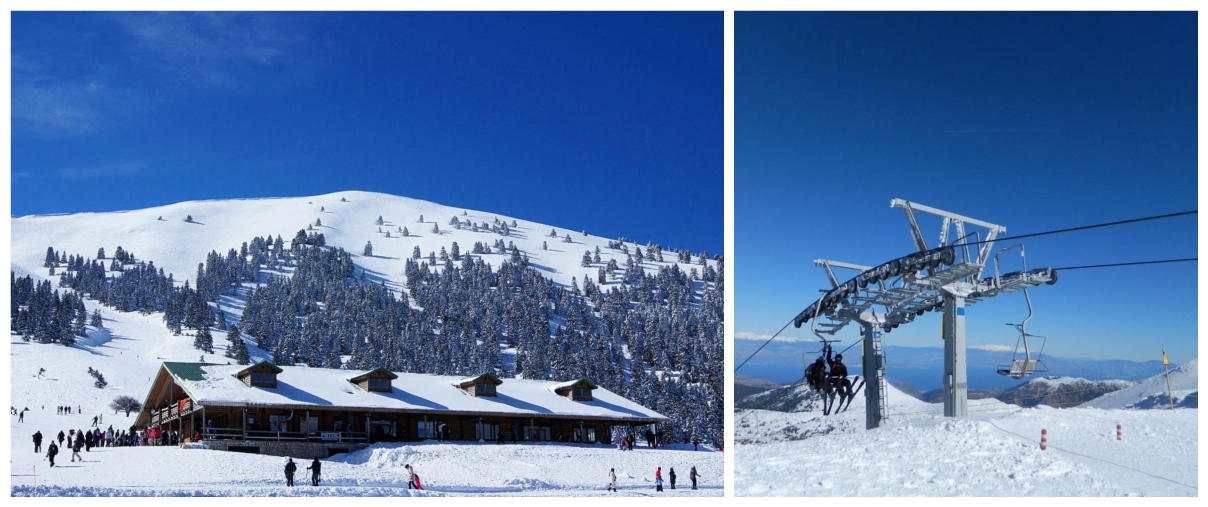
Kalavrita is also known for its traditional local cuisine, which features a variety of dishes made with fresh local products influenced by the region’s history and geography. Some of the traditional products of Kalavrita are local handmade pasta such as lasagna, hylopites, trahanas, orzo, milk, PDO barrel feta cheese, myzithra, gruyere and formaela, milk and yoghurt, trout, salmon, sausages, legumes and beans such as giant beans, chickpeas, lentils and delicious fava beans, walnuts, chestnuts, mushrooms, honey, spoon sweets such as traditional sugared rose, sausages and aromatic herbs and plants gathered from the mountains (Erymanthos tea, Chelmos tea, chamomile tea and oregano). The soil conditions of Kalavrita, the good climate and the traditional methods of cultivation and production make its agricultural and animal products unique.
Wine has always been an element of the daily diet in the region, while the role of the monasteries (Mega Spilaio and Agia Lavra) and the churches of the region was important for viticulture and wine-making. Today, viticulture is more developed in the communities bordering Aigialeia, as standard wineries operate on the roads connecting this region with Kalavrita. Next to the indigenous varieties such as Roditis, Lagorthi, Mavrodaphne and Black Kalavritino, new, earlier varieties such as Asyrtiko, Sauvignon Blanc, Malagouzia and Cabernet Sauvignon are planted.
In terms of accommodation, Kalavrita offers a variety of options to suit all budgets. From luxury resorts to budget-friendly hotels and apartments, visitors can easily find a place to stay that meets their needs.
To find out more about Kalavrita you can check-out the official website of the municipality: https://discoverkalavrita.gr
I.L.
TAGS: TOURISM

